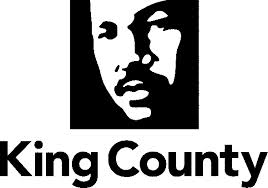
Case Study: Writers in the School
Case Study: Seattle Arts & Lectures' Writers in the School (WITS)
Founded: 1987 (Seattle Arts & Lectures); 1994 (WITS)
Headquartered: 340 15th Ave E, Seattle, WA 98112
Program Locations: 27 public schools and the Seattle Children’s Hospital
2016 Operating Expenses: $1.96m (SAL)
The students at the Writers in the Schools (WITS) Year-End Reading and Celebration at Seattle Public Library take the mic one-by-one, each fondly introduced by their writer-in-residence who hand-picked them for the event. For a few minutes, the auditorium is silent but for their voices. They read poems that bounce between unabashedly teenaged themes and those seemingly far beyond their years, but through them all runs the current of authentic voice. Run by Seattle Arts & Lectures since 1994, WITS is all about cultivating that voice. Whether it is a few minutes on a stage, being published in a chapterbook anthology, or seeing your words transformed into visual art in a traveling exhibition, WITS spreads the life-changing experience of being heard.
Seattle Arts and Lectures has always taken the “long view” as an organization. The genesis of the WITS program was the idea that in this literature-loving city, the people getting up and reading on SAL stages and receiving accolades should be coming from right here. Alicia Craven, WITS Program Director, shares findings that students consider themselves writers or not writers as early as elementary school. Knowing that “Attitudes about writing are so important and they get ingrained at such a young age,” WITS does everything they can to shape those attitudes in a positive manner. They embed professional writers in schools, so students have role models and receive feedback from them, so teachers have peers to improve instruction with. They create venues for students’ voices to get heard and they elevate writers, through efforts like the Seattle Youth Poet Laureate.
Once a pilot in one or two schools, the program now embeds teaching writers-in-residence in 27 public schools throughout the region, plus Seattle Children’s Hospital. Over the 2016/17 school year, 28 WITS writers-in-residence worked with 6,255 students for a total of 60,625 contact hours of instruction, an average 10 hours of instruction per student. At Seattle Children’s Hospital, two writers worked with nearly 600 children and teens in the last school year. The WITS evaluation documents the individual impacts on students and teachers. The strongest impacts for younger youth are in attitudes towards writing; being proud of their work at WITS (88%), thinking they can continue to get better at writing (90%), and thinking writing is fun (77%). Older youth report practicing being creative through writing (80%), sharing their writing with other people (78%), and working to improve the quality of their writing (77%). 9 out of 10 teachers themselves report strengthening their own teaching skills and practice through WITS.
Social Impact: Spreading the power of being heard
When asked about the impact of working with a WITS teaching artist, students report benefits ranging from “it helped us improve our writing,” to “it saved my life.” The idea that a high-quality outlet for self-expression can save lives is not an exaggeration in a world where 28 percent of Grade 8 students, 34 percent of Grade 10 students, and 37 percent of Grade 12 students reported experiencing depressive feelings during the past year, and nearly 20% of students across grades report contemplating suicide. As one student related, “I have a way to actually let feelings out now. Never been able to speak my mind. Never able to share thoughts. Never had a community to go to. I’d go to therapy and nap on the couch…Going to WITS class creates a physical, emotional, mental space where my words matter.” Another shared, “It is the only class where you as a person is taken into account. It’s not about facts, it’s going into deeply heavy experiences.”
Though not about facts, creative writing is a unique discipline that has one foot in the scholastic world and one outside of it. Students can work on building skills needed for academic success while expressing content that is personal and immediately relevant to them which is essential for personal development. By providing an intuitive space for mental play, students that may have struggled with more restrictive writing assignments, often come to the realization that yes, they too can be a “good writer.” WITS amplifies these opportunities for confidence-building by encouraging students to share their work and creating as many venues as possible for them to share on stage, with family, or in a publication.
Students are working to maintain a sense of themselves as a student in the middle of a medical situation that could last days or even months and year
The school at Seattle Children’s Hospital is a unique place, where in addition to the impacts described above, writing can play another role complementing medical treatment. Students are working to maintain a sense of themselves as a student in the middle of a medical situation that could last days or even months and years. Scott Hampton, School Program Director, observes, “it really aids treatments when students are able to process what is going on in a fairly natural way…their resiliency is built…to me it dovetails really well to think about writing and art creation as interventions for pain.”
Ann Teplick, resident writer at Seattle Children’s Hospital, notes “there is power in getting what’s on your mind on paper.” That powerful first act of getting words out can be a catalyst for so much more communication and connection with one’s self and the community, and even healing. She recalls working with a formerly high-achieving student with severe traumatic brain injury struggling with word-finding and memory. His family was adjusting to the newness of him. With Ann, he wrote about basketball, “he wasn’t under demands of ‘practicing word finding’ practicing memory’ just free flowing expression and he was so conversational and comfortable without that pressure. Mom was so delighted to see him talking about typical teenage boy things.”
The impact ripples outward from these young minds and classrooms as powerful art can move hearts, minds, and even policy. The Youth Poet Laureate named in 2016, Maven Gardner, was experiencing homelessness, unknown to WITS, at the time of her award. She has gone on to speak in front of City Council and several other organizations, and to engage communities around youth homelessness and LGBTQ rights. Twenty-four years after the first pilot program, with resident writers that have been with the program up to 17 years, and thousands of students engaged, WITS continues to empower youth to make change with their words
Sponsors
Social Impact Study Community Conversations Sponsors
![]()
![]()






